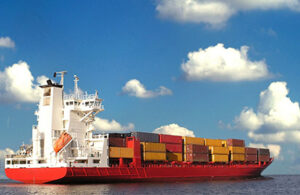
Sonja Voisin – President – The Shipping Association of Trinidad and Tobago (SATT)
The shipping industry has recently undergone significant changes and challenges driven by the dynamics of demand and supply. Trinidad and Tobago’s containerised cargo volumes have strongly recovered, exceeding pre-pandemic levels by 11%. However, regional trade faces challenges from oversupply in interregional trade lanes, causing longer transit times and logistical hurdles.
The shipping industry has recently undergone significant changes and challenges driven by the dynamics of demand and supply. Trinidad and Tobago’s containerised cargo volumes have strongly recovered, exceeding pre-pandemic levels by 11%. However, regional trade faces challenges from oversupply in interregional trade lanes, causing longer transit times and logistical hurdles.
An engine of global trade in T&T
According to Sonja Voisin, President of The Shipping Association of Trinidad and Tobago (SATT), one of the major shifts in the industry post-the COVID-19 pandemic has been the exponential growth of container shipping leading to a global freight crisis and increased profits for carriers. With global online shipping reaching record levels, the demand for container shipping surged. Despite the easing of freight rates, shipping lines continue to order more ships, resulting in an increase in the container ship order book for 2023/2024. As shipping volumes normalise, it is expected that freight rates will eventually stabilise at pre-COVID levels. Reflecting on the local market, SATT says, “Trinidad and Tobago’s containerised cargo volumes have recovered strongly since COVID; after an initial reduction of 10% in 2020, volumes in 2022 caught up to and surpassed pre-pandemic levels by 11%. Notwithstanding, expansion of national port capacity and productivity factors strongly in Trinidad’s ability to benefit from this global phenomenon.”

Shipping in the Caribbean seas
Regional trade faces challenges due to the influx of newly built vessels in larger classes, leading to an oversupply in interregional trade lanes. As a result, smaller feeder ships are increasingly being used, necessitating transhipment and longer transit times for shipments to the Caribbean region. Efficient supply chain management is crucial to mitigate delays and maintain inventory control. Furthermore, the lack of an appropriate and reliable service connecting Caribbean territories poses a challenge for intraregional trade.
In response to these changing dynamics, carriers have engaged in frequent mergers and acquisitions, consolidating, and restructuring their relationships. Some shipping lines have expanded their operations by investing in terminals and offering comprehensive logistics services. These strategic moves aim to enhance operational efficiency, optimise customer experience, and achieve synergies in a competitive market.Schedule reliability has long been a concern for container carriers, exacerbated by the COVID-19 pandemic. However, recent improvements can be attributed to reduced disruptions, decreased port congestion, and improved container availability. As supply chain congestion gradually declines, stakeholders anticipate enhanced operational efficiency and more predictable schedules.
Trends: technology, sustainability, nearshoring
Growing global environmental awareness has prompted shipping lines to prioritise eco-friendly practices. Many carriers are investing in vessels powered by alternative fuels, such as green methanol. While these initiatives contribute to a cleaner and more sustainable shipping industry, they come at a significant cost, potentially impacting freight rates. The adoption of slow steaming to reduce fuel consumption has also resulted in longer transit times, requiring adjustments in inventory management strategies. Digitisation and automation are gaining traction in the shipping industry. The SATT expands, “Shipping lines and freight forwarders are increasingly emphasising digitisation and automation to streamline processes and improve efficiency. The use of technologies such as cryptocurrency, blockchain, big data analytics, artificial intelligence (AI), and machine learning (ML) are gaining traction. Digitisation, though costly, offers the potential for significant efficiency gains. Carriers and logistics providers are investing in automating their customers’ experience to enhance convenience and deliver seamless services.” Initiatives such as the Port Community System led by the Ministry of Trade and Industry are needed to integrate the supply chain digitally.
The disruptions caused by the COVID-19 pandemic have compelled companies to explore alternative sourcing options; the SATT explains, “Nearshoring, or sourcing closer to home, offers advantages such as reduced transportation costs, competitive pricing, and shorter lead times for better inventory control. While countries such as Mexico have been identified as new sourcing destinations, challenges remain, particularly for raw materials sourced from Asia. Regional agreements such as with Caricom provide opportunities for increased market access but pose shipping costs challenges, especially for smaller islands.” Additionally, the reduction in capacity in the Panama Canal due to drought can have significant effects, including increased freight rates, longer transit times, and supply chain disruptions. Accessing foreign exchange, mainly US dollars, remains a challenge. Adapting to these issues requires proactive planning and flexibility.
The future of shipping
According to the SATT, in order to capitalise on the opportunities and address the challenges, stakeholders in Trinidad and Tobago’s shipping industry, including government authorities, port operators, and shipping companies, must collaborate. “By focusing on infrastructure development, cost-effective connectivity, sustainability, and technological advancements, Trinidad and Tobago can position itself as a thriving shipping hub in the Caribbean, facilitating regional trade and attracting global investments. Notably, access to US dollar foreign exchange continues to be a challenge for the industry and dialogue with stakeholders is in progress to roll out a solution.” Furthermore, industry self-regulation is imperative to ensure compliance with business, safety, and environmental standards, and efforts to operationalise such a framework are underway. The shipping industry is evolving rapidly, driven by capacity surges, digitisation, sustainability initiatives, and sourcing diversification. Trinidad and Tobago must adapt to these changes and capitalise on the opportunities to strengthen its position in the global trade landscape. Through collaboration, infrastructure development, and technological advancements, the country can become a key player in the shipping industry, facilitating regional trade and attracting investments.
Source: https://www.whoswhotnt.com





